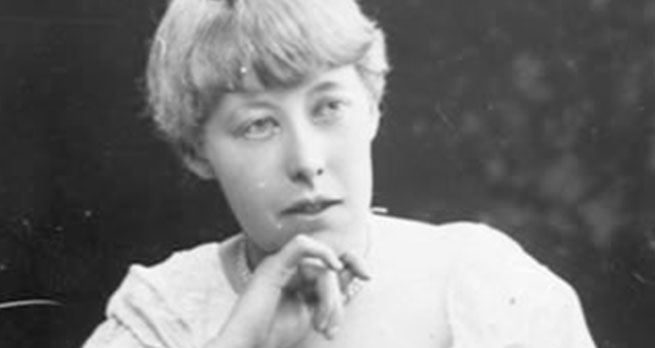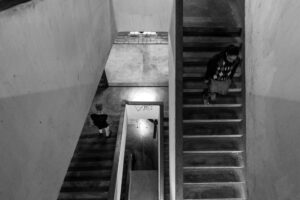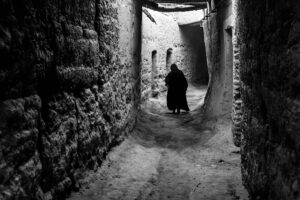In this blog post Eoghan Ryan discusses Katherine Tynan’s war-time poetry collections (1915-1918).

In her 1922 memoir, The Wandering Years, Katharine Tynan describes the day on which she learned that the First World War had ended and notes the curious absence of any mention of the Armistice in her journal. She writes retrospectively that there was: “not a word of the Armistice […] Not one word of the Great Day! I remember that I kept saying to myself: ‘The boys are safe. No one is being killed. Isn’t it wonderful? Wonderful!’ But all the time my heart was numb” (34). Tynan’s acknowledgement of the curiosity of this absence is understandable considering her preoccupation with the war as reflected in her contemporary writing. During the war period alone, she published three collections of verse specifically related to the war-time context which reflects its significance in her private and public lives. From her home in Mayo (her husband was stationed there as a Resident Magistrate), she would write hundreds of letters each week to bereaved families whose sons had died in the war, as well as letters to soldiers, including correspondence with the poet and soldier Francis Ledwidge. This blog post examines Tynan’s engagements with the war, focusing on her three war-time collections: Flower of Youth: Poems in War Time (1915), The Holy War (1916), and Herb o’ Grace (1918). It contributes to existing scholarship by drawing attention to the collections’ complex depictions and considerations of the war, focusing in particular on the perceived duty of the poet and the role of symbolism in poetry treating human rights issues.
In an earlier memoir, The Years of the Shadow (1919), Tynan discusses the response to her poem “Flower of Youth”, the publication of which led to her receiving hundreds of letters. The poem was quoted, she states, in a sermon by the Bishop of London and “preached” by all denominations but her own. The poem depicts the arrival to heaven of many young men, conflates their death with that of Christ, and ends with an assertion of the needlessness of mourning:
Oh, if the sonless mothers weeping, And widowed girls could look inside The glory that hath them in keeping Who went to the Great War and died, They would rise and put their mourning off, And say: “Thank God, he has enough!”. (55) Similar poems appear throughout the collections, seeming to reflect the author’s faith and her anxieties concerning her two sons fighting in the war.
A religious framework is frequently evident in the poems and raises questions about the nature of Tynan’s depictions of the war. As Lucy Collins has noted, Tynan’s poems “in the devotional mode grow more gradually from her personal experience”, however, the “sheer volume of her work leads to many poems that rehearse the expected responses, and religious sentiments can at times be used to avert inner questioning, rather than to deepen it” (25).
Many of the poems frame the war as a “holy war” (a comparison which becomes more poignant in poems which consider the capture of Jerusalem, as Tynan’s son fought in this campaign); others emphasise the natural world, frequently focusing on the “tending of a garden”, suggesting the home front of the war. This is reflected in the plant names used throughout the collections: “heartsease”, “ladders to heaven” and “love lies bleeding”. Gardens, in the poems, relate to the question of faith in renewal, whether natural or spiritual, and are often focal points of epiphany, giving rise to questions about the relationship between faith and the act of “witnessing”. The entangling of these concerns is most evident in the poem “The Vision” in which a soldier braves death each night to do “a little gardening” on the grave of a fallen comrade. One night, during shellfire, he has the titular vision and is simultaneously blinded:
They shot Flynn’s eyes out. That was good. Eyes that saw God are better blind. Flynn muses on beatitude, His empty eye-sockets behind. In a bare London hospital ward He smiles and prays the live-long day. He who had seen the living Lord Has Light upon the darkest way. (12)
Immanuel Levinas has stressed “the responsibility incumbent upon [the witness]” and has argued that the “glory of the Infinite reveals itself by what it is capable of doing in the witness” (quoted in Forché, 137). As Tynan was writing in large part for a Christian audience, and in many ways offering solace and comfort, such depictions raise the question of the ideological quality of the poems, the ethical nature of conflating war and religious belief, and the sublimation and equation of suffering with a form of salvation.
Such depictions might be contrasted with the injuries in “The Broken Soldier” from The Holy War, in which the titular figure – a “remnant of a man, maimed and half-blind” – finds solace in the secular act of gardening and by doing so accrues a range of natural comparisons which juxtapose with the physical realities of war evidenced in his injuries. It is significant that peace in this poem is not teleologically connected to war in religious terms:
The Lady at the Hall has given him a light task, He works in the gardens as busy as a bee; One hand is but a stump and his face a pitted mask; The gay soul goes singing like a bird set free. (26) The poem ends: Hither and thither, hopping like Robin on the grass, The soul in the broken man is beautiful and brave; And while he weeds the pansies and the bright hours pass The bird caught in the cage whistles its joyous stave. (26)
Alternatively, one might consider poems that treat the distant nature of the home front which keeps figures isolated from the realities of war, as in “The Convent Garden”:
And round and round by twos and threes The nuns walk, praying still For fighting men across the seas Who die to save them ill. From the dear prison of her choice The young nun’s thoughts are far; She muses on the golden boys At all the Fronts of War. (21)
As evidenced by these examples – the latter of which approaches a criticism of passive faith in contrast to action – the depictions of war and peace throughout the collections are by no means singular. In the opening poem of the first collection, “Joining the Colours”, there is no “holy war”, and the men are “food for guns and shells” (9). In the final poem of the second collection, “The Only Son”, the home front is transmuted to heaven, and the poem depicts a mother waiting for her son and happily receiving news of his recent death in the war and therefore his anticipated arrival. These examples are not to suggest the development of poems in terms of a religious framework – “The Flower of Youth”, discussed above, was published as early as 1914 – but rather to draw attention to the ethical drives of the poems. In their varied representations of war, the collections raise important questions about the entanglement of experience, duty and faith, as well as the role of symbols in poetry which engages with questions, or depicts the violation, of human rights.
Works Cited
Collins, L. (ed.), 2012. “Introduction” in Poetry by Women in Ireland: A Critical Anthology, 1870-1970 (Liverpool University Press).
Forché, C., 2013. “Reading the Living Archives: The Witness of Literary Art” in Elizabeth Swanson Goldberg and Alexandra Schultheis Moore (eds), Theoretical Perspectives on Human Rights and Literature (Routledge).
Tynan, K., 1918. Herb o’ Grace (Sidgwick & Jackson).
Tynan, K., 1916. The Holy War (Sidgwick & Jackson).
Tynan, K., 1915. Flower of Youth: Poems in War Time (Sidgwick & Jackson).





